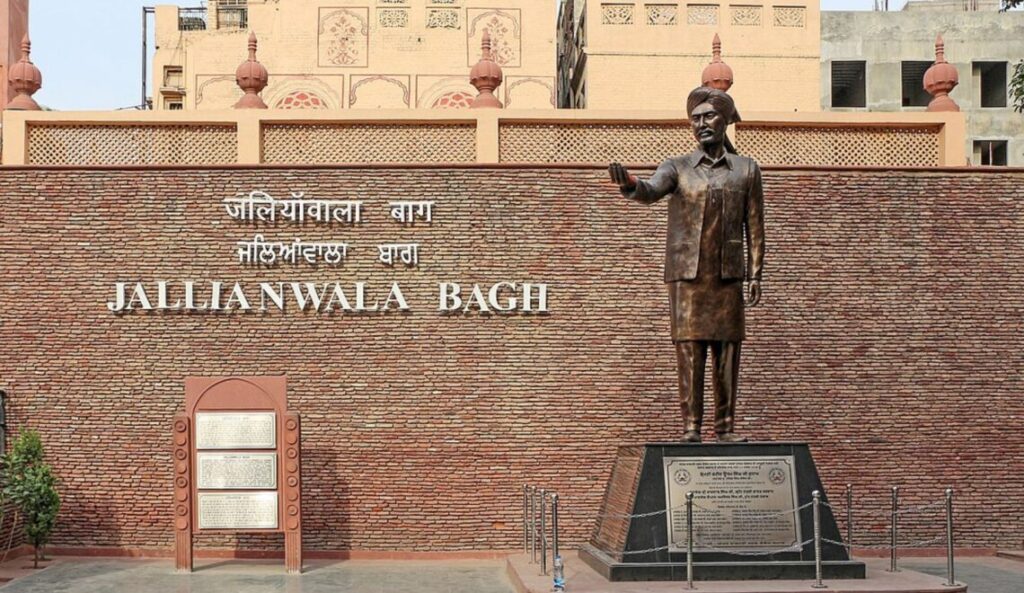Welcome to Jallianwala Bagh, a solemn yet historically significant park in Amritsar’s heart.
On April 16, 1919, this serene garden transformed into a site of tragedy, witnessing the ruthless massacre perpetrated by British soldiers against a peaceful gathering.
Today, the park is a poignant reminder of India’s struggle for independence. Upon entering through a narrow path, visitors encounter a poignant ensemble of structures.
The museum and gallery within offer deeper insights into the harrowing events of that fateful day.
The Amar Jyoti flame, etched with the resonant words of “Vande Mataram,” symbolizes eternal homage to the martyrs.
Bullet holes on the Wall of Martyrs bear witness to the brutality inflicted, while the Flame of Freedom stands tall, engraved with the names and faces of those who perished.
History
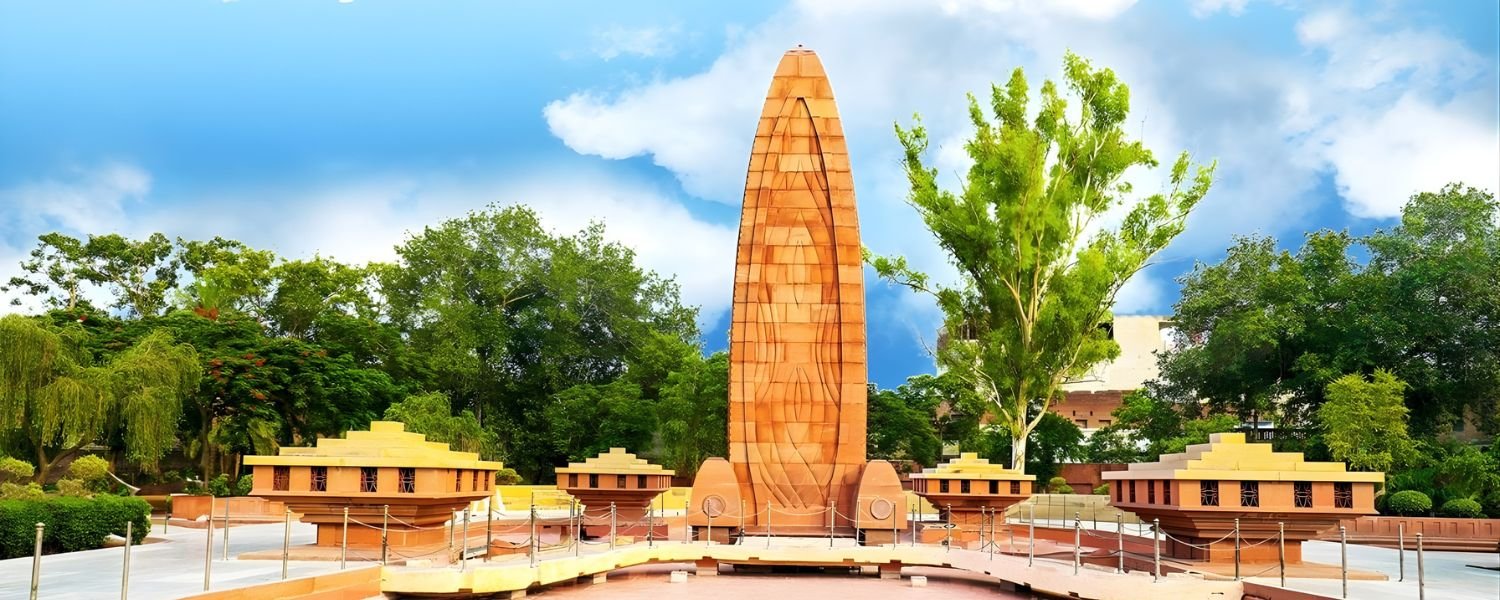
Early history
Situated adjacent to the Golden Temple complex, the 7-acre expanse known as Jallianwala Bagh bears traces of a verdant past, as suggested by its name, translating to “the garden of the Jallah-man,” with a Jallianwala Bagh well bodies at its centre.
Initially a lush and inviting space, it gradually became a favoured spot for leisure and relaxation among visitors to the nearby Golden Temple.
However, by 1919, the landscape had transformed drastically. What was once a thriving green space had withered, surrounded by densely packed residential buildings, narrow streets, and a single entry and exit point?
The area, enclosed by a wall, remained largely vacant, carrying the legacy of the Jallianwalia family in its nomenclature.
Massacre
1919 marked a tumultuous period in Indian history, characterized by widespread unrest fueled by various socio-political factors.
Amidst escalating tensions arising from the exclusion of Mahatma Gandhi from Punjab and the secret deportation of prominent leaders Saifuddin Kitchlew and Satyapal, the Rowlatt Act further stoked the flames of dissent.
In response, Indians sought to assemble and voice their grievances. On the fateful morning of Baisakhi, April 13, 1919.
The city reverberated with the echoes of military drums as Brigadier General R.E.H. Dyer’s stringent regulations were announced across 19 locations.
These directives restricted movement, prohibited gatherings and even threatened lethal consequences for those found on the streets after 8 pm.
However, the announcements, delivered amidst the cacophony of the bustling city, failed to reach many vital areas.
Upon his arrival, accompanied by troops, the enclosed space hosted a diverse congregation of approximately 20,000 individuals spanning various demographics and faiths.
Ignoring any semblance of order or restraint, Dyer ordered his troops to open fire on the unarmed crowd.
The barrage of bullets, totalling around 1,650 rounds, indiscriminately claimed numerous lives and inflicted injuries, leaving a tragic imprint on the history of Jallianwala Bagh.
Memorial site
Jallianwala Bagh, a poignant symbol of India’s struggle for independence, underwent significant renovations between 2019 and 2021.
Established as a ‘memorial of national importance’ by the Indian government in 1951, the site holds profound Historical Monuments of Punjab.
However, the troubles of 1947 took a toll, leading to the destruction of several surrounding buildings.
To commemorate the centenary of the massacre, the central government allocated ₹20 crore in 2019 for the site’s restoration. Initially, a trust was formed in 1920, aiming to create a memorial at this tragic location.
However, the renovation process sparked controversy. Critics, including historians, political leaders, and some martyrs’ kin, lamented that the renovations failed to honour the tragedy appropriately.
Nevertheless, after being closed to the public in February 2019, the revamped memorial reopened its gates in August 2021.
Despite criticisms, the revitalized Jallianwala Bagh Memorial Site is a testament to India’s enduring struggle for freedom.
Site
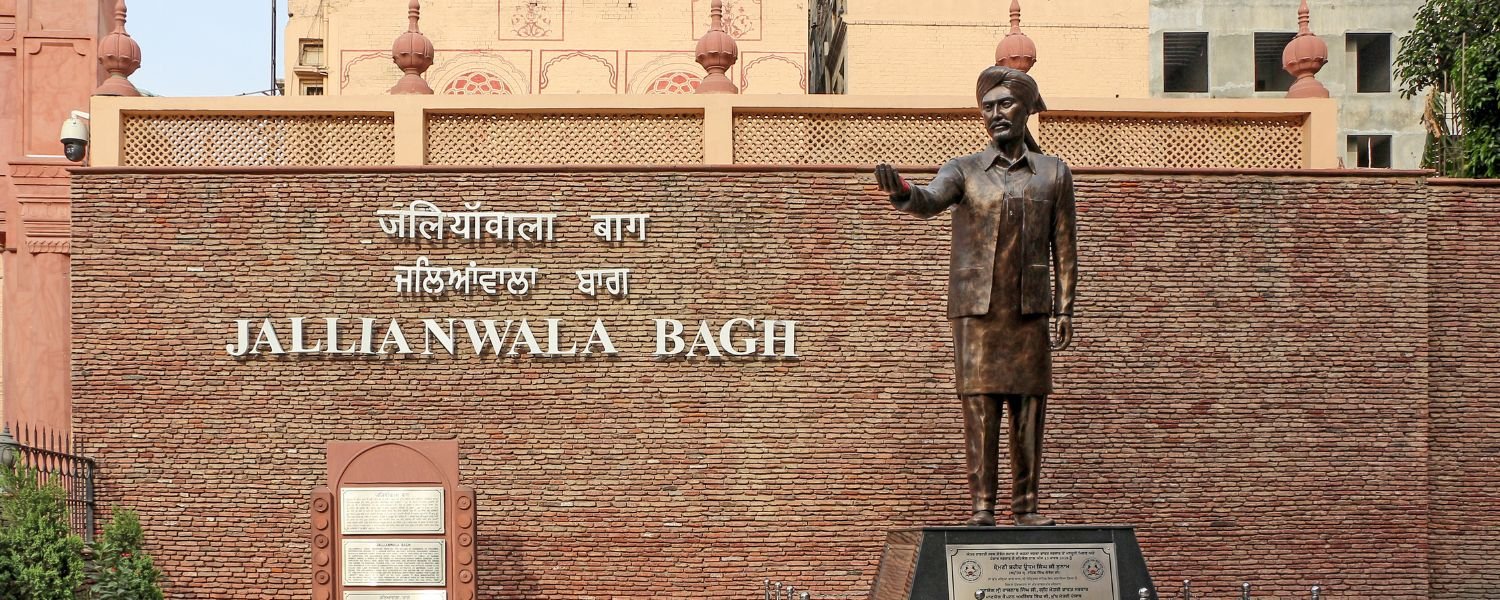
Entrance
Journeying through the narrow passage that serves as the entry point to Jallianwala Bagh not only unveils a pathway into the present but also echoes the haunting past.
This very passage, once the sole ingress and egress during the tragic massacre, now stands as a poignant reminder of history’s scars.
Symbolizing resilience and remembrance, a statue of Udham Singh stands sentinel at the entrance, honouring the courage of those who perished.
As visitors step further, the garden unfolds, adorned with ancient trees whispering tales of bygone eras.
Nestled amidst this serene landscape, a solemn tribute flickers—a flame titled Amar Jyoti, illuminating the domed meditation area with the fervour of eternal homage.
Amidst the tranquillity, the resonating call of ‘Vande Mataram’ reverberates, bridging the chasm between past and present, evoking a sense of reverence and reflection.
Memorials
Jallianwala Bagh, renowned for its poignant Martyrs Well, is a solemn testament to the sacrifices made during India’s struggle for independence.
Designed by the esteemed American architect Benjamin Polk, the Martyr’s memorial, inaugurated in 1961, encapsulates the harrowing events of April 13, 1919.
With a stark figure of “120” marking the recovered bodies, this site bears witness to the ruthless actions of General Dyer Jallianwala Bagh.
Thirty-six bullet marks etched into its walls serve as visceral reminders of the brutality inflicted upon unarmed civilians.
Gathered against the oppressive Rowlatt Act, they were met with indiscriminate violence, firing 1,650 rounds without warning.
Jallianwala Bagh is not only a symbol of resistance but a solemn reminder of the enduring cost of freedom.
The Martyr’s gallery and museum
Among its treasures, the gallery houses a collection of paintings featuring political leaders and a haunting depiction of the massacre’s aftermath.
Notably, the portrayal includes Gurkha soldiers, added later, and a solemn portrait of Udham Singh, a symbol of resistance.
However, seamlessly between mediums, the museum incorporates newspaper clippings and correspondence from luminaries like Mahatma Gandhi and Rabindranath Tagore.
Through 45 panels, visitors are guided through the atrocities of the most beautiful city in Punjab, ensuring that the names and stories of the fallen are never forgotten.
Management
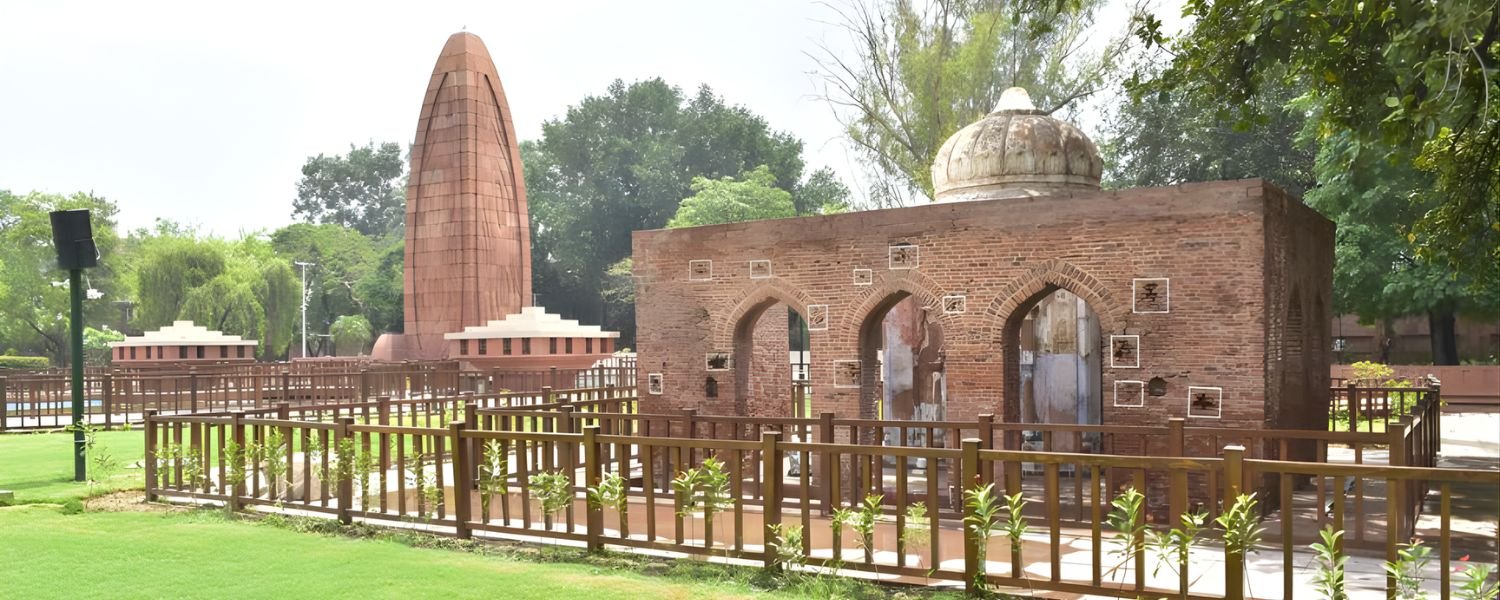
The stewardship of the historic Jallianwala Bagh National Memorial rests with the Jallianwala Bagh National Memorial Trust, established under the Jallianwala Bagh National Memorial Act of 1951, sanctioned by the Parliament of India.
Initially comprising eminent figures such as Jawaharlal Nehru, Saifuddin Kitchlew, and Maulana Abul Kalam Azad, along with governmental representatives, the Trust was pivotal in preserving this solemn site.
Notably, a significant amendment in November 2019 revamped the composition, replacing the President of the Indian National Congress with the Leader of the Opposition in the Loksabha or, in their absence, the Leader of the largest opposition party.
This amendment also empowered the Central Government to dismiss nominated trustees prematurely.
The revised framework underscores the evolving custodianship of Jallianwala Bagh, reinforcing its significance in India’s historical narrative.
Site visits
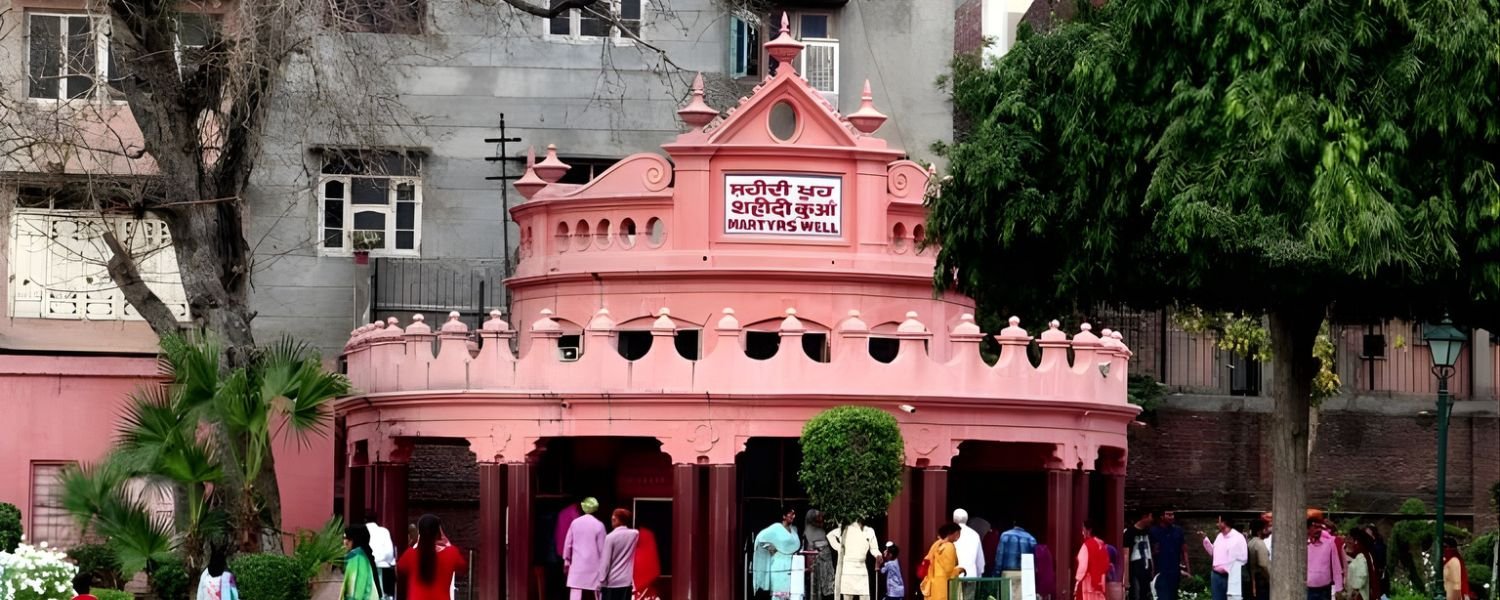
Jallianwala Bagh has drawn significant attention since the tragic massacre, becoming a poignant site for numerous official and publicized visits.
Among the earliest inquiries was Jawaharlal Nehru’s visit, which revealed startling evidence of the brutality with 64 bullets found lodged in a single wall segment.
Over the years, notable figures, including Queen Elizabeth II and British Prime Minister David Cameron, have paid their respects with visits in 1961, 1983, 1997, and 2013, respectively.
Notably absent from the itinerary during Prince William and Kate’s visit to India, jallianwala bagh hatyakand has received attention from various British dignitaries, such as Sadiq Khan and the Archbishop of Canterbury.
Indian leaders have not overlooked its significance either, with Prime Minister Narendra Modi and Kiren Rijiju visiting in 2015 and 2016, respectively.
The momentum for change was further fueled in April 2019 when proposed renovations were discussed during a commemoration ceremony attended by Vice President Venkaiah Naidu and Punjab Governor V.P. Singh Badnore.
Rahul Gandhi’s visit in the same year underscored ongoing reverence for this historic site.
Conclusion
In conclusion, Jallianwala Bagh is a poignant testament to the sacrifices made during India’s struggle for independence.
This hallowed ground, scarred by the brutality of the massacre, serves as a solemn reminder of the enduring quest for freedom. While controversies surrounding its renovation persist, the revitalized memorial site attracts visitors from far and wide, fostering a deeper understanding of the nation’s tumultuous past.
Moreover, with the stewardship of the Jallianwala Bagh National Memorial Trust, the site remains enshrined in India’s historical narrative, ensuring that the stories of the fallen are never forgotten.
As we reflect on April 13, 1919, we are reminded of the resilience of the human spirit and the relentless pursuit of justice and liberty.
FAQ
Q: How many died in Jallianwala Bagh?
A: However, the troops kept firing until they exhausted their ammunition. Additionally, Estimates of those killed vary from 379 to 1,500 or more people. The attack injured over 1,200 others, including 192 with severe injuries.
Q: What is the story of Jallianwala Bagh?
A: Jallianwala Bagh incident on April 13, 1919, in which British army fired on a large percentage of unarmed Indians in an open space called as the Jallianwala Bagh in Amritsar in the Punjab region (now in Punjab state) of India, killing several hundred people and wounding many hundreds more.
Q: What happened in 1919 in Amritsar?
A: The April 13 1919 Jallianwala Bagh Massacre (or Amritsar Massacre) was an infamous episode of brutality which saw Dyer order his troops to open fire on an unarmed men, women, and children trapped in a walled garden during a Sikh festival.
Q: Who ordered the killing at Jallianwala Bagh?
A: The Jallianwala Bagh massacre took place on April 13 1919. General Dyer blocked the only entrance to Jallianwala Bagh & ordered his troops to open fire on the unarmed civilians.
